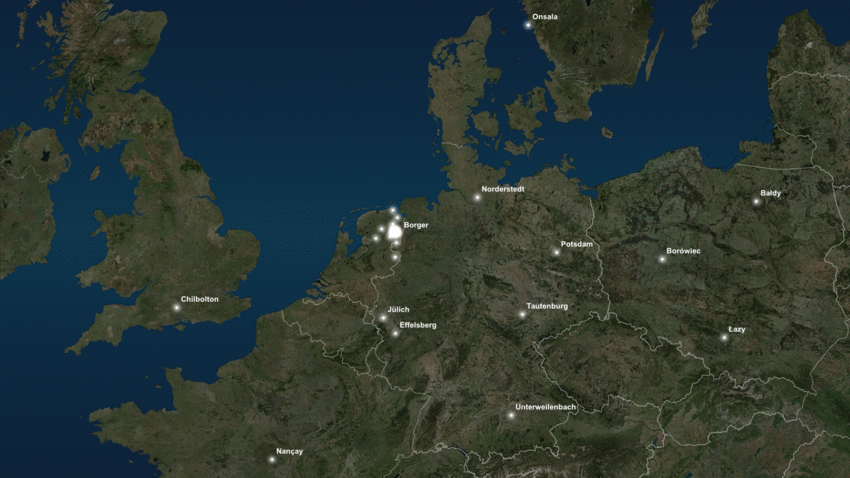Daily Image
07-01-2015Mapping the LOFAR antennas
| Submitter: | Tammo Jan Dijkema |
| Description: | Of course we know that we have the position coordinates of the LOFAR antennas right, to a tiny fraction of the wavelength. Otherwise, all kinds of funny effects would be visible in the images of the sky. But it is always nice to see it confirmed by other means. So, we converted the antenna coordinates from the International Terrestial Reference Frame (IRTF) into the WGS84 frame used by popular internet mapping systems, and overlaid the antennas on the map. The sequence of images gives an overview of the current array of LOFAR stations (soon to be extended), and some zoom-ins of various parts. All LOFAR stations actually consist of one station (array) of Low Band Antennas (LBA, 10-80 MHz) and one or two stations of High Band Antennas (HBA, 120-240 MHz). The central superterp has a diameter of 300m, and contains six LBA and 12 HBA stations. Here are some of the underlying considerations: The existence and operation of LOFAR has a huge influence on the design of the Square Km Array (SKA). |
| Copyright: | Background (c) Microsoft |
| Tweet |  |
